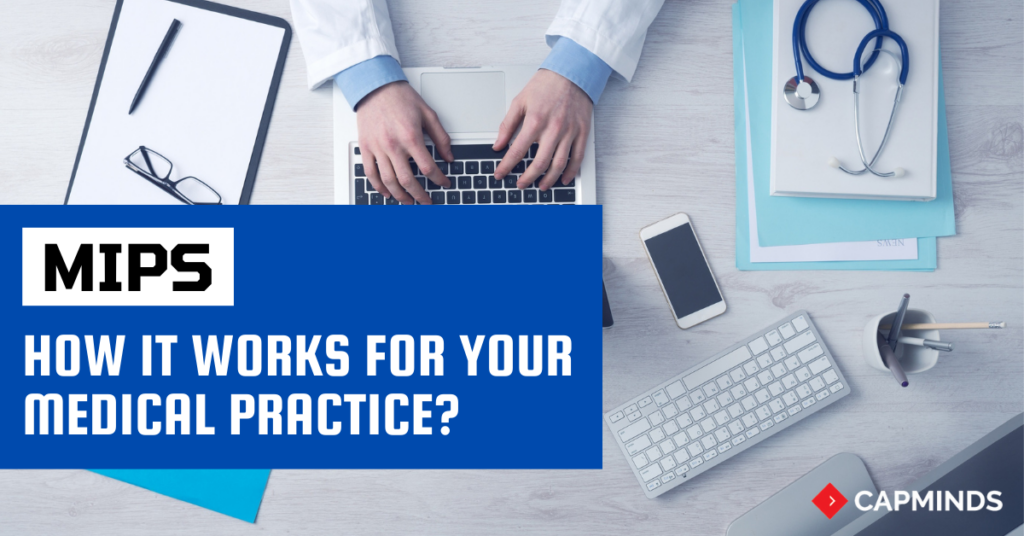MIPS: How It Works For Your Medical Practice?
In today’s emerging healthcare industry, everyone has been heard about the word MIPS and its quality measures. But most of us don’t have a clear view of how MIPS benefits your medical practices and how does it work based on the performance categories. In this article, we discussed briefly MIPS and its four performance categories that make up your final score.
What is MIPS?
MIPS stands for Merit-based Incentive Payment System, one of two tracks under the Quality Payment Program, which moves Medicare Part B providers to a performance-based payment system.
The American Academy of Family Physicians (AAFP) called MIPS “the first real opportunity for high-performing physicians to earn substantial bonuses, and for all physicians to avoid penalties if they meet prospectively established quality thresholds.”
MIPS streamlines three old Medicare programs into a single payment program which includes
1. Physician Quality Reporting System (PQRS)
2. Value-based Payment Modifier (VM) Program
3. Medicare Electronic Health Record (EHR) Incentive Program (Meaningful Use)
Furthermore, MIPS provides practitioners with annual performance updates that are based on four performance categories.
How MIPS Works?
MIPS is a performance-based payment system that includes four performance categories, that provide clinicians the flexibility to choose the activities and measures that are most meaningful to their practice and get a score in each category. An eligible clinician’s performance in each of the four weighted performance categories is combined to create the MIPS Composite Performance Score, also known as the MIPS Final Score, which is used to determine Medicare Part B payment adjustments in the future.
The categories are:
- Quality: replaces the current PQRS program;
- Cost: replaces current value-based modifier program;
- Promoting interoperability: replaces advancing care information and previously the meaningful use program; and
- Clinical practice improvement activities (new component)
1. Quality
The Quality category of MIPS replaces the Physician Quality Reporting System (PQRS) and requires eligible clinicians to report data to CMS for quality measures related to patient outcomes, appropriate use of medical resources, patient safety, efficiency, patient experience, and care coordination. Clinicians must choose and report on six measures that are most relevant to their practice, including one outcome measure. CMS will define what specific types of measures it wants to be reported each year, based on the current health and healthcare delivery of the country.
Today, one of these measures must be categorized as an outcome measure or a high-priority measure. Physicians can also choose to report a specialty measure set. Small practices that submit at least one quality measure will receive a bonus of 3 points for their MIPS-eligible clinician.
2. Promoting Interoperability
This replaces advancing care information, which in turn replaced meaningful use. This category emphasizes patient engagement and the electronic exchange of health information through Certified Electronic Health Record Technology (CEHRT).
They can choose to report a customizable set of measures that reflects how they use EHR technology in their daily practice. It evaluates how well clinicians share health information with other clinicians and other health facilities to coordinate patient care. Physicians are rewarded for their performance on the measures based on their CEHRT edition.
RELATED: UNDERSTANDING ONC INTEROPERABILITY RULE FOR PROVIDERS
3. Improvement Activities
This category measures how well clinicians improve their care processes, enhance patient engagement, and increase access to care. As with the Quality performance scores, clinicians can choose the activities that are most relevant to their healthcare practice when they participate in the program. In the year 2018, the activities are group under nine categories such as
- Expanded practice access;
- Population management;
- Care coordination;
- Beneficiary engagement;
- Patient safety and practice assessment;
- Participation in an APM;
- Achieving health equity;
- Integrating behavioral and mental health; and
- Emergency preparedness and response
Clinicians participating in medical homes can earn full credit in this category, and those participating in APMs will earn at least half credit.
4. Cost
This replaces the value-based modifier program. CMS will calculate these measures based on claims and availability of sufficient volume; physicians don’t have to report them. A variety of cost measures are used to assess the total cost of care throughout the year for clinician’s patients.
Best Ways To Prepare Your Practice For MIPS
1. Having Certified EHR software
The best thing your medical practice can do to get ready for MIPS is to check whether you are using the best up-to-date EHR software If your practice is still using the traditional paper-based record system, then its time to shift your practice to the best EHR software with the advanced features like online appointment scheduling, telehealth, and patient portal. This will automatically save your time and effort and is the important requirement for getting reimbursed by Medicaid and Medicare.
RELATED: THE ADVANCED GUIDE TO EHR IMPLEMENTATION
2. Having Expert Professionals To Stay On Top Of MIPS Requirements
Not all of your staff needs to be fully briefed on MIPS requirements. But it is very important to designate at least one expert staff to stay on top of MIPS requirements. As the Government regulations are always subject to change, it is expected to see some adjustments to MIPS directives every year.
Final Thoughts
In today’s competitive healthcare marketplace, medical practices need to take advantage of every new opportunity to boost their practice revenue. MIPS was designed to tie payments to quality and cost-efficient care, drive improvement in care processes and health outcomes, increase the use of healthcare information, and reduce the cost of care.
Adhering to MIPS requirements will ensure that your practice will receive all of the financial incentives that you are due from Medicaid and Medicare. So it is very important to start preparing your practice for MIPS today. CapMinds helps hospitals, clinics, and doctors’ offices to get certified in MACRA, MIPS, and APM models, so that maximum payment is received without incurring any financial penalty.



